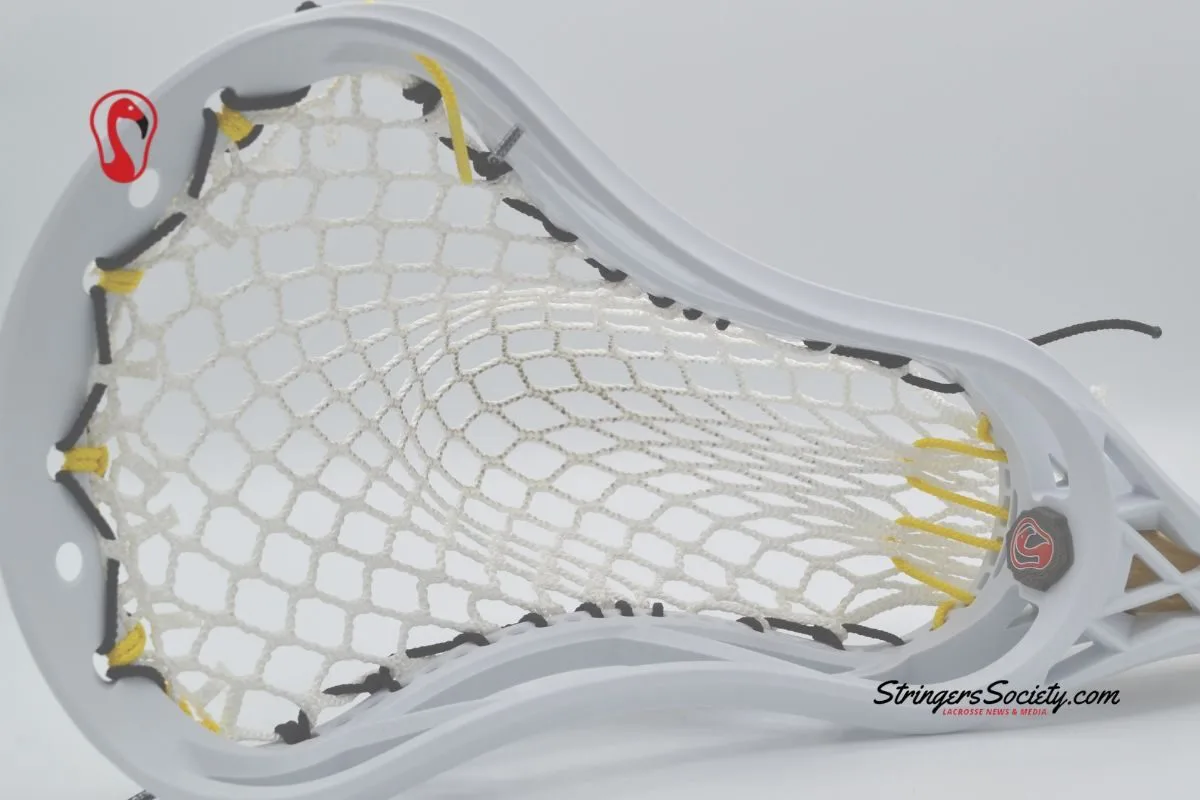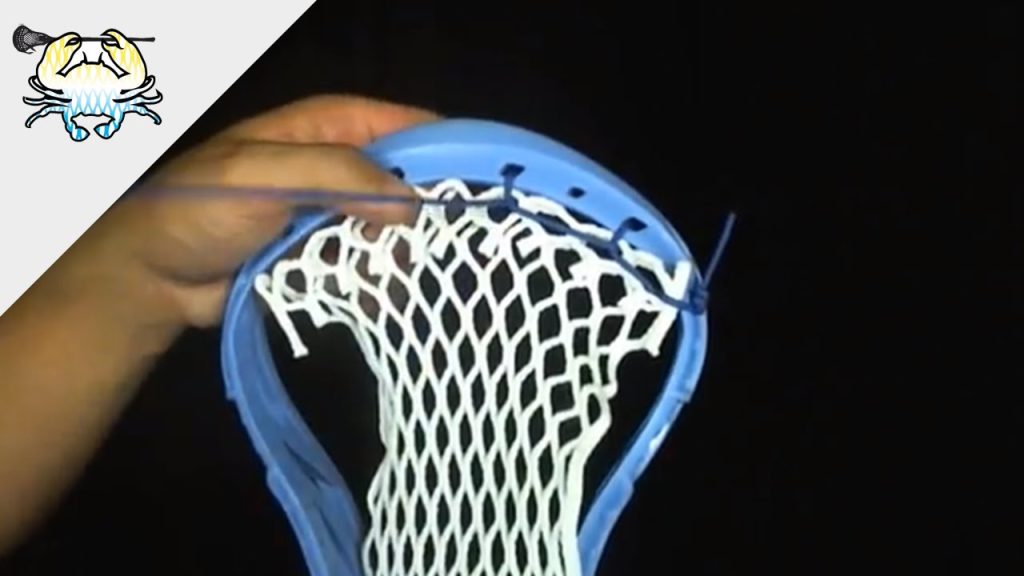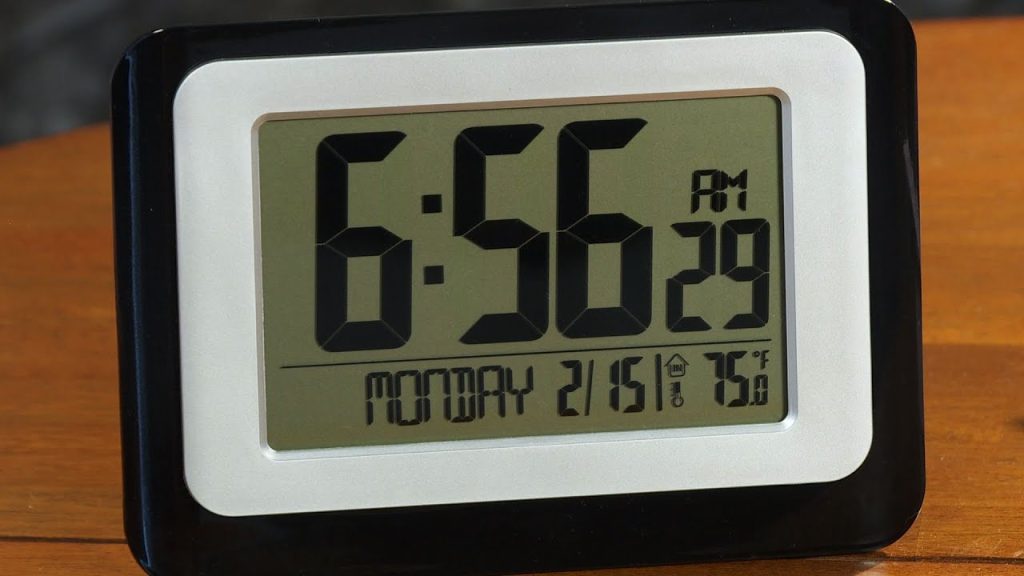Restringing a lacrosse stick is a useful skill for players. It helps maintain control and improves performance.
Lacrosse players know the importance of a well-strung stick. Over time, the mesh and strings wear out or lose tension. This affects your game. Knowing how to restring your lacrosse stick saves time and money. Plus, it allows you to customize your pocket.
In this guide, we will walk you through the steps to restring your lacrosse stick. Whether you are a beginner or experienced player, this process is straightforward. You will need some basic tools and materials. Ready to get started? Let’s dive into the essentials of restringing your lacrosse stick.
Materials Needed
Restringing a lacrosse stick can seem challenging. But with the right materials, the task becomes manageable. This guide covers the essential items you need for the job.
Lacrosse Stick
First, you need your lacrosse stick. Ensure it is clean and dry. A well-maintained stick makes the restringing process smoother. Remove any old strings or mesh before you start.
Stringing Kit
A stringing kit is crucial. It typically includes sidewall strings, shooting strings, and mesh. Select a kit that suits your preference and stick type. Different kits offer various string lengths and materials.
Sidewall strings secure the mesh to the stick head. They come in different colors and strengths. Choose durable strings to ensure longevity. Shooting strings affect the ball’s release and accuracy. Experiment with different styles to find what works best for you.
The mesh forms the pocket of the stick. It comes in different types such as hard, soft, or semi-hard. The choice depends on your playing style and position. A new mesh will enhance your stick’s performance.
Removing Old Strings
Removing old strings from your lacrosse stick is the first step in restringing. It may seem simple, but it requires some attention to detail. Properly removing the old strings ensures a smooth restringing process.
Cutting Strings
Begin by cutting the existing strings. Use a pair of sharp scissors or a utility knife. Carefully cut the strings close to the knots. Avoid damaging the mesh or the frame of the stick. Remove all the strings from the head of the stick.
Removing Mesh
Once the strings are cut, you can remove the mesh. Gently pull the mesh away from the head. Ensure you do not tear the mesh. Inspect the mesh for any damages. If the mesh is in good condition, you can reuse it. If not, replace it with a new mesh.
Remember, removing old strings is crucial. It sets the stage for a successful restringing process. Take your time and be meticulous. Your efforts will pay off in the end.
Preparing New Strings
Restringing a lacrosse stick starts with preparing new strings. Properly measured and prepared strings ensure a tight and durable setup. Follow the steps below to get your strings ready for the job.
Measuring Strings
Accurate measurements are crucial. Here’s how to measure your new strings:
- Lay out your strings on a flat surface.
- Use a measuring tape or ruler.
- Measure the lengths needed for shooting strings, sidewall strings, and bottom strings.
Shooting strings typically measure around 20 inches. Sidewall strings are often 24-36 inches long. Bottom strings can vary but usually are around 8-10 inches. These measurements ensure you have enough string to work with, avoiding any shortage during the restringing process.
Burning Ends
Burning the ends of your strings prevents fraying. Here’s how to do it safely:
- Use a lighter or match.
- Lightly burn the end of the string.
- Quickly press the burnt end with your fingers or a hard surface.
This process seals the ends, ensuring they don’t unravel. Be cautious while burning the strings to avoid any accidents. This small step helps maintain the durability and longevity of your lacrosse stick’s strings.

Credit: stringerssociety.com
Attaching The Mesh
Attaching the mesh to your lacrosse stick is a crucial step. It ensures your stick performs well during play. Proper attachment provides better control and accuracy. This guide will help you secure the mesh correctly.
Securing Top
Start by laying out your mesh. Make sure it’s flat and even. Fold the top row of diamonds over the top string row. Use a lighter to melt the ends to prevent fraying. Insert the top string through the first diamond. Pull it tight and secure it to the top hole. Repeat this for each top hole. Your mesh should be tight and even.
Aligning Sides
Next, align the sides of the mesh. Attach the side strings to the top side holes. Weave the string through each side diamond. Make sure the mesh is tight and aligned. Tie off the strings at the bottom side holes. Check to ensure there are no loose strings. Your mesh should now be secure and even.
Stringing The Sidewalls
Stringing the sidewalls of a lacrosse stick is crucial. It secures the mesh to the head, ensuring proper pocket formation. This section will guide you through the process, making it simple and clear.
Starting At Top
Begin by attaching the mesh to the top of the lacrosse head. Use a top string knot to secure it. Ensure the mesh is tight and straight.
Weaving Through Holes
Next, weave the sidewall string through the holes in the head. Start from the top hole and move down. Pull the string through the first hole of the mesh. Continue this pattern, ensuring each loop is tight.
Make sure to keep the mesh aligned. This helps in creating a consistent pocket. Avoid skipping any holes for even tension throughout.

Credit: www.youtube.com
Stringing The Bottom
Stringing the bottom of a lacrosse stick is a crucial step. This process ensures the mesh stays tight, giving you better control and accuracy. Follow these steps to do it right.
Securing Mesh
First, you need to secure the mesh. Start by folding the bottom row of the mesh. This will create a pocket where the ball rests. Make sure the fold is even. This step is key for a balanced pocket.
Next, use a piece of sidewall string. Thread it through the bottom hole of the lacrosse head. Then, pull it through the first diamond of the mesh. Continue this process all the way across. Make sure each loop is tight. This prevents the mesh from shifting during play.
Here’s a quick table for reference:
| Step | Description |
|---|---|
| 1 | Fold bottom row of mesh |
| 2 | Thread sidewall string through bottom hole |
| 3 | Pull string through first diamond of mesh |
| 4 | Repeat across entire bottom row |
Tying Knots
Now, let’s tie the knots. This step is vital for keeping the mesh secure. Start by creating a simple knot at the end of your sidewall string. This will anchor the string and prevent it from slipping.
Then, tie a double knot through each hole of the lacrosse head. Make sure the knots are tight. Loose knots will make the pocket inconsistent. Here’s a tip: use a pair of pliers to pull the knots tight.
After securing all the knots, check the mesh. Ensure it’s evenly spread and tight. This will help with ball control and accuracy.
In summary:
- Create a simple knot at the end of the string.
- Tie double knots through each hole.
- Use pliers to tighten knots.
- Check for even mesh tension.
By following these steps, you’ll have a well-strung lacrosse stick. This will enhance your game performance.
Creating The Pocket
Creating the pocket in a lacrosse stick is a crucial step. The pocket affects how you catch, cradle, and shoot the ball. A well-made pocket can improve your game. Let’s dive into the steps of creating the pocket.
Adjusting Depth
The depth of your pocket matters a lot. A deeper pocket holds the ball better. But, it can slow down your release. A shallow pocket allows for a quicker release. Adjust the sidewall strings to control the depth. Tighten or loosen them to find your ideal depth.
Forming Shape
The shape of your pocket is also important. It affects how the ball sits. A U-shape is common. It cradles the ball snugly. Use shooting strings to form this shape. Weave them through the mesh in a U-pattern. Adjust until the pocket holds the ball well.
Remember, your pocket should fit your style of play. Experiment with different depths and shapes. Find what works best for you. This will help you play better on the field.
Final Adjustments
After restringing your lacrosse stick, the final adjustments are crucial. These steps ensure your stick performs well during the game. This section covers testing tension and making corrections to get your stick game-ready.
Testing Tension
First, check the tension of the strings. Grab the mesh and push down gently. The mesh should form a pocket but not too deep. It should also spring back. If it feels too loose or too tight, adjustments are needed.
| Action | Result |
|---|---|
| Push down on the mesh | Forms a pocket |
| Release the mesh | Springs back |
Making Corrections
If the pocket is too deep, tighten the shooting strings. Pull each string a bit tighter and tie it off again. If it’s too shallow, loosen the shooting strings slightly. Small adjustments make a big difference.
- Identify the problem area.
- Adjust the shooting strings.
- Test the tension again.
Continue this process until you achieve the perfect balance. Remember, a well-adjusted stick can improve your game performance significantly. So take your time and ensure everything feels right.

Credit: stringking.com
Frequently Asked Questions
How Do You Start Restringing A Lacrosse Stick?
To start restringing, remove the old string and mesh. Then, secure the new mesh to the top of the head.
What Tools Do You Need?
You need lacrosse string, mesh, scissors, and a lighter. These tools will help you restring your lacrosse stick efficiently.
How Long Does It Take To Restring?
Restringing a lacrosse stick takes about 30-60 minutes. The time varies based on experience and complexity.
Can Beginners Restring Their Own Lacrosse Stick?
Yes, beginners can restring their lacrosse stick. Many online tutorials and guides can help you through the process.
Conclusion
Restringing a lacrosse stick might seem hard at first. But with patience and practice, it gets easier. Follow the steps carefully and take your time. Properly strung sticks improve your game. They give better control and accuracy. Always check your stick before play.
A well-maintained stick lasts longer and performs better. Share these tips with friends and teammates. Happy playing and enjoy your lacrosse journey!


